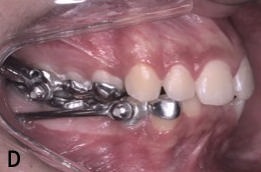Vol. 14 – Number 54 – 2021 How-to Column Page 12-21 How to perform a three-dimensional analysis of the upper airways in orthodontic patients? Luísa Schubach da Costa Barreto1 Bruno Moreira das Neves2 Cátia Cardoso Abdo Quintão3 José Augusto Mendes Miguel4 Abstract The upper airways (UA) are influenced by the growth and development of the craniofacial complex and any alteration in the maxillary bones during orthodontic treatment can narrow or increase the size of the pharyngeal spaces. The three-dimensional analysis of the volume and the minimum axial area of the respective sub-spaces is beneficial for case planning as it allows the identification of possible physical barriers that compromise the air passage and the respiratory flow, besides being an auxiliary diagnostic method for disorders related to this function. The request for cone-beam computed tomography (CBCT) is necessary for the correct digital evaluation with the appropriate protocols for the acquisition and reconstruction of the image exams, calibration of the methodology, and standardization of their analysis. The objective of this work is to demystify the specific step-by-step analysis in the Dolphin Imaging® software and to describe the technical and anatomical factors for delimiting the spaces corresponding to the UA. To illustrate this protocol, CBCT of a patient with Angle Class II malocclusion, first division were analyzed before the installation (T1) of a mandibular thruster (fixed cemented Herbst appliance with dental anchorage) and after 12 months of treatment (T2). From the measurement of the spaces corresponding to VAS, comparing the two treatment times, it was possible to analyze the changes in the pharyngeal space after the use of mandibular thruster and to highlight the importance of the three-dimensional assessment of the air dimension for individualized orthodontic planning. Descriptors: Malocclusion, Angle Class II, mandibular thruster appliances, craniofacial growth, cone beam computed tomography. 1 Student of PhD in Dentistry – Area of concentration in Orthodontics – UERJ, MSc in Orthodontics – UFRJ, Specialist in Pediatric Dentistry – UFF/Niterói. 2 PhD student in Dentistry – Concentration area in Orthodontics – UERJ, MSc in Dentistry – Concentration area in Clinical Clinical Dentistry, UFF/Nova Friburgo, Specialist in Orthodontics, UERJ. 3 Associate Professor, Department of Orthodontics, School of Dentistry, UERJ. 4 Associate Professor, Discipline of Orthodontics, UERJ. 4 Associate Professor, Department of Orthodontics, UERJ, Head of the Masters Program in Orthodontics, UERJ, Diplomate of the Brazilian Board of Orthodontics and Dentofacial Orthopedics. DOI: 10.24077/2021;1454-1221
This content is restricted to site members. If you are an existing user, please log in. New users may register below.




